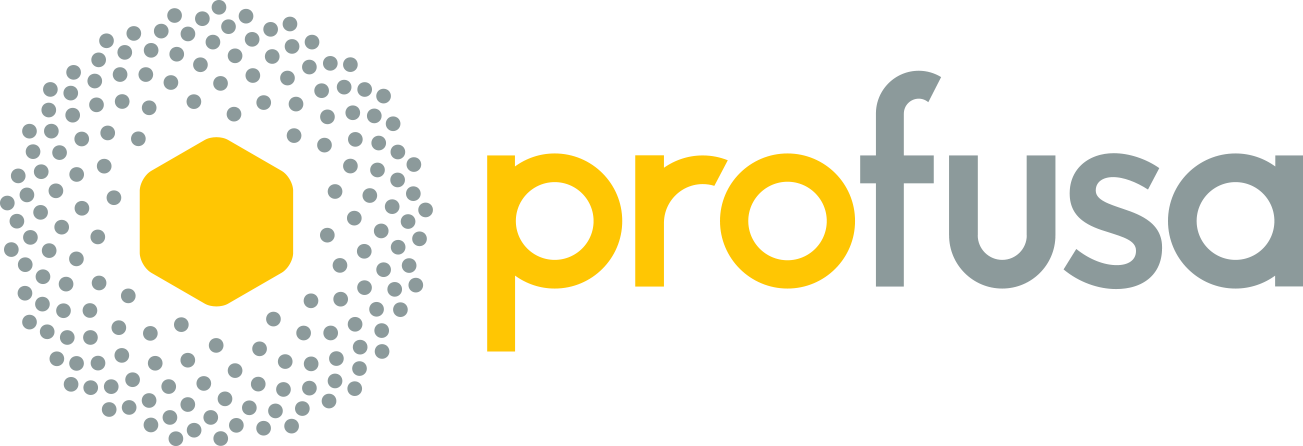Tools & Platforms
Profusa Deploys NVIDIA AI to Build AI-Driven Insight Portal for Continuous Biomarker Monitoring

What You Should Know:
– Profusa,, a digital health company, has announced the adoption of NVIDIA technology to power a new AI-driven insight portal for continuous biochemistry monitoring.
– The portal will be used in combination with Profusa’s Lumee oxygen optical hydrogel sensors and reader system, extending the company’s AI-enabled tools to remote patient monitoring settings. Profusa anticipates an early 2026 rollout of the portal in the European Economic Area (EEA).
– Profusa believes that real-time biochemistry data across a large population is a data set currently missing for AI-enabled healthcare improvements. By combining its Lumee platform with NVIDIA NeMo hardware and software, Profusa plans to build a scalable, AI-fueled technology backbone to improve personalized sensor data accuracy and connect real-time sensor data with electronic medical records (EMR).
Redefining Healthcare with AI-Fueled Workflows
The new portal is designed to provide physicians with “trustworthy, always-on insights” rather than just more dashboards. It aims to translate raw optical signals from the sensors into reliable biometrics and provide actionable clinical context.
Expected capabilities and features of the physician portal include:
- Agentic clinical workflows: An AI-powered assistant that integrates with EMRs, wearables, and home devices to help with notes, orders, care plans, remote monitoring, and triage.
- Time-aligned health data graph: A longitudinal view that combines Profusa biomarkers with EMR data, claims, wearables, genomics, and social determinants to power predictions and coaching.
- Guardrails by design: The system will use policy-aware orchestration to enforce clinical scope, data privacy, and safe responses.
- Model training options: The platform will allow for parameter-efficient tuning and post-training refinement of Profusa’s AI signal processing and clinical reasoning components.
“We believe that real-time biochemistry data across a large population is a data-set that is currently missing to enable the fulfillment of the promise of AI-enabled improvement in healthcare. Profusa is uniquely positioned to provide this proprietary data set, linking therapeutic decisions with real-time biochemistry changes, to generate valuable insights that are lacking today.” Ben Hwang, Ph.D., Profusa’s Chairman and CEO commented, “By combining our Lumee platform with the industry leading NVIDIA NeMo hardware and software stack, we plan to build an AI-fueled, scalable technology backbone for better personalized sensor data accuracy and real-time sensor data connections with electronic medical records (EMR), facilitating treatment and outcome predictions, in addition to establishing a robust data base for clinical literature for disease management.”
Tools & Platforms
Is AI Threatening Your Job Security? Tips to Safeguard Your Career in the Age of Automation

Key Takeaways
- AI is rapidly automating roles in customer service, data entry, programming, content creation, and analysis-heavy jobs across finance, law, and medicine.
- The most at-risk jobs are those with repetitive, rules-based, or entry-level tasks.
- Human-centric skills like judgment, empathy, and creativity remain in demand.
The rapid rise of artificial intelligence (AI) is reshaping the workplace faster than most people realize. What started with automating back-office tasks and customer service roles has now expanded into programming, legal research, financial analysis, and even creative fields such as writing and design. Experts predict that by 2030, up to 30% of U.S. jobs could be automated, with as many as 300 million jobs globally at risk because of AI and related technologies.
As AI tools become smarter and more accessible, the line between human and machine work is blurring—and the pressure to adapt is mounting. If you’ve noticed your workflow getting “smarter” or your company talking more about efficiency than expertise, you’re not imagining things. The age of AI-driven disruption has arrived, and it’s rewriting the rules of the workplace worldwide.
Which Jobs Are Most At Risk from AI?
The first wave of AI automation swept through customer service, data entry, and routine administrative work, said Dima Gutzeit, CEO of LeapXpert, a New York-based tech vendor that provides modern business communication tools with AI capabilities.
Now, he said, even roles in software development, content creation, finance, law, and medicine are being reshaped by code-writing engines, AI copywriters, and data-crunching models. Entry-level and repetitive positions are especially vulnerable, as AI excels at handling foundational tasks that once helped early-career professionals gain a foothold.
A June 2025 study by the Federal Reserve Bank of Dallas argued that most claims for what AI will do are “speculative” at this point. Indeed, many—including the World Economic Forum—have argued that the jobs AI produces will far outnumber those it renders redundant—170 million versus 90 million, respectively.
Nevertheless, the jobs most at risk from language-modeling AI include clerks, administrative assistants, and certain teaching positions. The telltale signs your job could be next? Your daily workflow starts to feel more software-driven, tools gain “AI-powered” features, and management talks about “co-pilots” and “automated insights.” If your responsibilities are becoming more about overseeing software than applying your unique skills, it’s time to take action.
While AI is rapidly transforming the workplace, experts agree that the best way to stay relevant is to focus on the qualities that make us uniquely human.
Here are some strategies to avoid being replaced by AI:
1. Demonstrate Your Humanity
AI can process data, but it can’t replicate judgment, empathy, or ethical decision-making. “What sets you apart isn’t your ability to process data—it’s your ability to interpret it, communicate it, and act on it,” Gutzeit told Investopedia. Employers are increasingly valuing creativity and abilities that remain stubbornly human, like relationship-building and nuanced communication.
2. Become an AI Power User
Don’t just fear the new tools, master them. Learn how to use AI platforms relevant to your field, from prompt engineering in content creation to AI-driven analytics in finance. The fastest learners today will be tomorrow’s leaders. Experiment with AI, critique its output, and figure out how to make it work for you.
3. Automate the Repetitive, Focus on the Unique
Identify the mechanical parts of your job and automate them, freeing up time for higher-value work.
“Strip the mechanical from your day so you can invest in the interpersonal-relationships, storytelling, negotiation,” Gutzeit said. The more you focus on tasks AI can’t do, the more secure your position becomes.
4. Upskill Continuously
Stay ahead by regularly updating your technical and soft skills. Pair AI literacy with human-centric strengths: Combine analytics with storytelling, or prompt engineering with leadership. The best opportunities will go to those who can bridge the gap between algorithmic speed and human nuance.
5. Watch Industry Trends and Pivot Early
Monitor which roles and industries are being automated, and be proactive about moving into areas where human expertise is still essential. Look for companies that use AI to amplify, and not replace, human value.
“Professionals who understand that partnership create more value than either humans or machines can deliver alone,” Gutzeit said.
The Bottom Line
AI isn’t just coming for your job; it’s already transforming the workforce. But the future belongs to those who adapt early, master new tools, and double down on the skills that make us human. It’s important to stay curious, proactive, and relentlessly focused on value. You can turn the AI revolution into an opportunity instead of a threat.
Tools & Platforms
Jared Kushner launches AI startup with top Israeli tech entrepreneur

Coming to light after operating secretly since 2024, the company raised $30 million in a Series A round led by Kushner’s Affinity Partners and Gil’s Gil Capital, with backing from prominent investors like Coinbase CEO Brian Armstrong, Stripe founder Patrick Collison and LinkedIn co-founder Reid Hoffman. Brain Co. aims to bridge the gap between large language models like GPT-5 and their practical application in organizations.
The venture began in February 2024 when Kushner, Gil, and former Mexican Foreign Minister Luis Videgaray met to address challenges large organizations face in integrating AI tools. Kushner, seeking to expand Affinity’s AI investments, connected with Gil, a former Google and Twitter executive turned venture capitalist, through his brother, Josh Kushner.
Videgaray, who met Kushner during Trump’s 2016 campaign, also joined. Brain Co. has secured deals with major clients like Sotheby’s, owned by Israeli-French businessman Patrick Drahi and Warburg Pincus, alongside government agencies, energy firms, healthcare systems and hospitality chains.
With 40 employees, Brain Co. collaborates with OpenAI to develop tailored applications. A recent MIT study cited by Forbes found that 95% of generative AI pilot programs failed in surveyed organizations, highlighting the gap Brain Co. targets.
CEO Clemens Mewald, a former AI expert at Google and Databricks, explained, “So far, we haven’t seen a reason to only double down on one sector. Actually, it turns out that at the technology level and the AI capability level, a lot of the use cases look very similar.”
He noted similarities between processing building permits and insurance claims, both requiring document analysis and rule-based recommendations, areas where Brain Co. is active.
Kushner, who founded Affinity Partners after leaving the White House, said, We’re living through a once-in-a-generation platform shift,” Kushner said in a press release. “After speaking with Elad, we realized we could build a bridge between Silicon Valley’s best AI talent and the world’s most important institutions to drive global impact.”
Affinity manages over $4.8 billion, primarily from Saudi, Qatari and UAE funds. In September 2024, Brain Co. acquired Serene AI, bringing in experienced founders. While Kushner will serve as an active board member, Gil said he will primarily operate through Affinity.
Tools & Platforms
How Alibaba builds its most efficient AI model to date

A technical innovation has allowed Alibaba Group Holding, one of the leading players in China’s artificial intelligence boom, to develop a new generation of foundation models that match the strong performance of larger predecessors while being significantly smaller and more cost efficient.
Alibaba Cloud, the AI and cloud computing division of Alibaba, unveiled on Friday a new generation of large language models that it said heralded “the future of efficient LLMs”. The new models are nearly 13 times smaller than the company’s largest AI model, released just a week earlier.
Despite its compact size, Qwen3-Next-80B-A3B is among Alibaba’s best models to date, according to developers. The key lies in its efficiency: the model is said to perform 10 times faster in some tasks than the preceding Qwen3-32B released in April, while achieving a 90 per cent reduction in training costs.
Do you have questions about the biggest topics and trends from around the world? Get the answers with SCMP Knowledge, our new platform of curated content with explainers, FAQs, analyses and infographics brought to you by our award-winning team.
Emad Mostaque, co-founder of the UK-based start-up Stability AI, said on X that Alibaba’s new model outperformed “pretty much any model from last year” despite an estimated training cost of less than US$500,000.
For comparison, training Google’s Gemini Ultra, released in February 2024, cost an estimated US$191 million, according to Stanford University’s AI Index.
Alibaba says its new generation of AI foundation models heralds the “the future of efficient LLMs”. Photo: Handout alt=Alibaba says its new generation of AI foundation models heralds the “the future of efficient LLMs”. Photo: Handout>
Artificial Analysis, a leading AI benchmarking firm, said Qwen3-Next-80B-A3B surpassed the latest versions of both DeepSeek R1 and Alibaba-backed start-up Moonshot AI’s Kimi-K2. Alibaba owns the South China Morning Post.
Several AI researchers attributed the success of Alibaba’s new model to a relatively new technique called “hybrid attention”.
Existing models face diminishing returns on efficiency as input lengths increase because of the way AI models determine which inputs are the most relevant. This “attention” mechanism involves trade-offs: better attention accuracy leads to higher computational expenses.
Those costs compound when models handle long context inputs, making it expensive to train sophisticated AI agents that autonomously execute tasks for users.
-

 Business2 weeks ago
Business2 weeks agoThe Guardian view on Trump and the Fed: independence is no substitute for accountability | Editorial
-
Tools & Platforms1 month ago
Building Trust in Military AI Starts with Opening the Black Box – War on the Rocks
-

 Ethics & Policy2 months ago
Ethics & Policy2 months agoSDAIA Supports Saudi Arabia’s Leadership in Shaping Global AI Ethics, Policy, and Research – وكالة الأنباء السعودية
-

 Events & Conferences4 months ago
Events & Conferences4 months agoJourney to 1000 models: Scaling Instagram’s recommendation system
-

 Jobs & Careers3 months ago
Jobs & Careers3 months agoMumbai-based Perplexity Alternative Has 60k+ Users Without Funding
-

 Podcasts & Talks2 months ago
Podcasts & Talks2 months agoHappy 4th of July! 🎆 Made with Veo 3 in Gemini
-

 Education2 months ago
Education2 months agoVEX Robotics launches AI-powered classroom robotics system
-

 Education2 months ago
Education2 months agoMacron says UK and France have duty to tackle illegal migration ‘with humanity, solidarity and firmness’ – UK politics live | Politics
-

 Podcasts & Talks2 months ago
Podcasts & Talks2 months agoOpenAI 🤝 @teamganassi
-

 Funding & Business3 months ago
Funding & Business3 months agoKayak and Expedia race to build AI travel agents that turn social posts into itineraries













